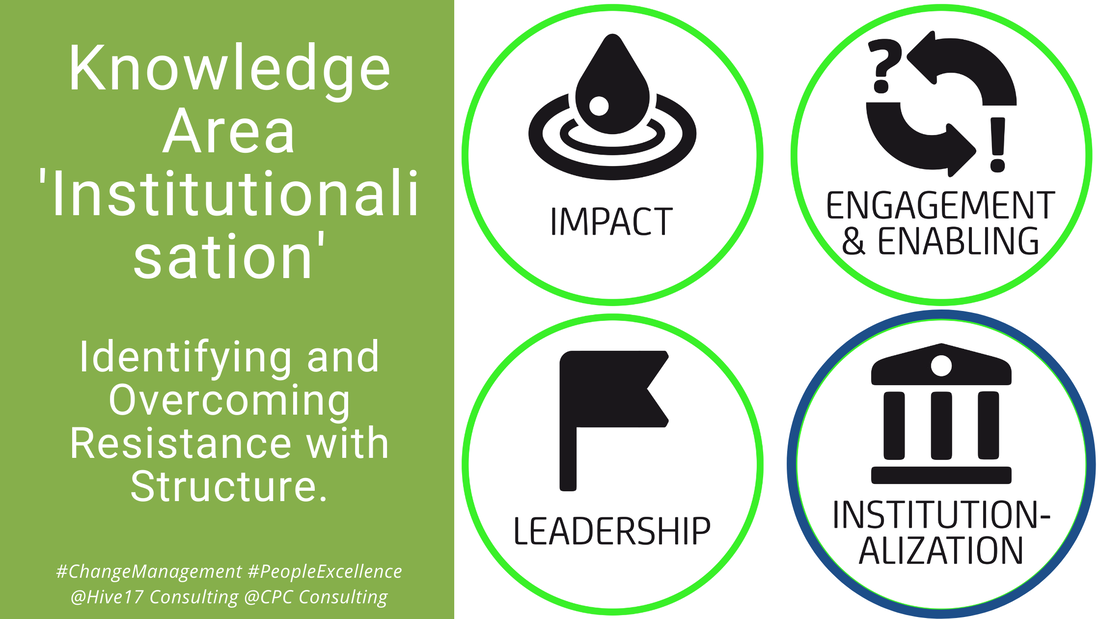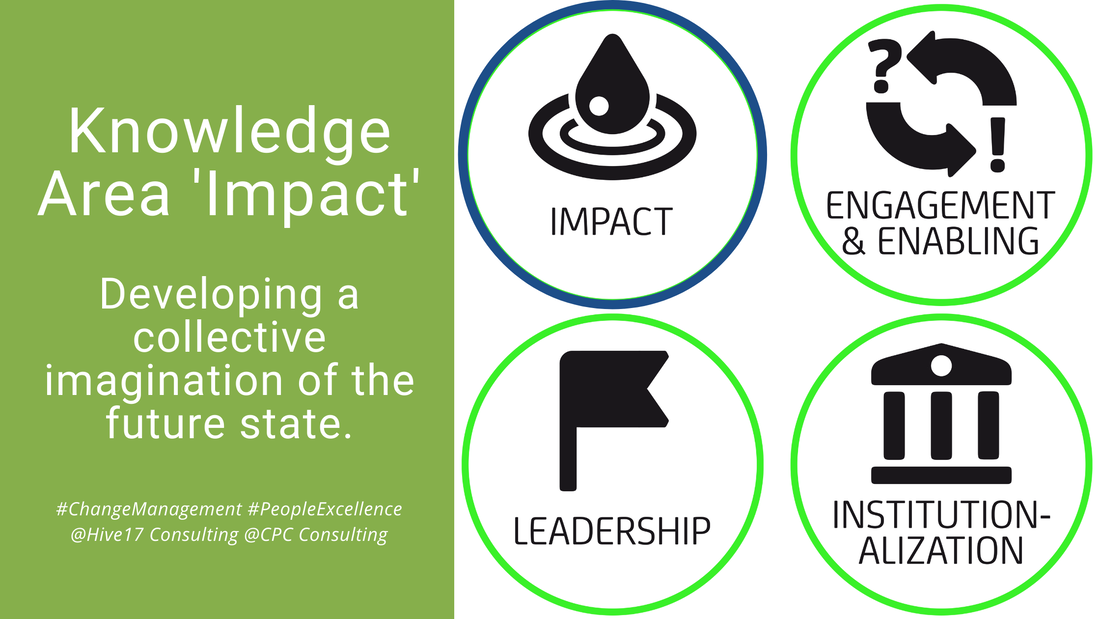|
This article was originally posted in the GloCoach Blog. Since the beginning of 2020 we learned that change can suddenly be omnipresent. Many companies struggled; some companies thrived due to the new business environment. And over the recent months there might be only a few companies that are not facing big challenges; if not from a business and financial perspective, then from an engagement and social point of view. How can we build an environment where we can thrive in all aspects of work and life?
0 Comments
Any transformation journey will experience resistance; that's is a normal behaviour. Important as a change manager is to identify these hurdles and design activities that nudge the adopters forward and create structures that reinforce the change. This will smoothen the journey to the future state. Transcript
Hi, do sometimes feel that day in and day out, for weeks and months, the only focus is on delivery, delivery, delivery. That's how many people feel these days. Still, that's not how we thrive. How can we create, how can we establish simple structures that lead to lasting change? In this series, we introduced the four knowledge areas of the CPC change management methodology. These themes provide guidance on what to consider in your change activities. My name is Tim Wieringa and I'm a change management practitioner here in Singapore. Today, we talk about institutionalisation. In this dimension, we are looking for underlying structures and we're looking for nudges which are reinforcing the change, reinforcing the future state. People, easily fall back to old habits. How can we prevent this from happening? Best to explain this with an example. About a year ago, I was exactly observing this single focus on delivery, and people around me were struggling a lot. In an agile transformation project, we wanted to allow the people to go through that change in a more sustainable way. The teams were using OKRs and we wanted to use this artefact to create a structure to think in different ways. Beside objectives for deliverables, we overall wanted to introduce two new objectives; one around learning with experiments and another one looking at the way of working. We then encourage the teams to define their own key results, which are contributing to these objectives. This gave the people the necessary permission to look at these two areas and started to improve and the delivery of the change. In a transformation journey, we need to continuously look out for this resistance and see how people feel about the change. Often, small notches allow people to reflect on the overall purpose of the change and define their own journey. Thank you for listening. Please click on the link below to learn more about how to become a Certified Associate in Change Management. And stay tuned for the next episode. We often talk about high-performing teams and trying to find recipes of success. In this context, it is important to look beyond short-term gains and work with establishing a platform for lasting success. At Hive17 Consulting, we like to look at different drivers for change:
How can we establish a solid human connection? One important element of establishing healthy relationships is trust - an understanding that we can rely on each other. Trust is typically between two individuals. In order to cultivate trust within a group of people we need to create a safe environment. We then want to look at what is psychological safety and how to establish such a place. And there is no easy path to achieve this. First of all, how is it not done. During my advisory and coaching activities, I have observed a number of teams and supported them to create a positive, collaborative environment. With one group of people, I observed something interesting. When the regular group was meeting, they had a open, respectful conversation and were easily able to bring issues on the table and then solve them. Then, a new person joined these conversations and immediately that openness was gone; the original group was not comfortable to speak up. This shows that each individual in a group is contributing to that safe space. And one thing is clear: stating that this is a safe space is not creating psychological safety! Laura Delizonna, from Stanford University, shares here how we can increase psychological safety in our team:
In order to creating lasting success, you need your team to be creative, you need them to feel comfortable to experiment and possibly "fail" (learn is the better word). Removing negative barriers created by lack of safety allows to build on the knowledge, experience and intelligence from everyone in the room. How are you building a high-performing team? Source: High-Performing Teams Need Psychological Safety. Here’s How to Create It, Harvard Business Review, August 2017 Resistance during a transformation journey can build up at any time, at any part of your organisation. Two elements are vital to overcome barriers: keep positive engagement high and develop the right skills. Both elements will increase confidence and therefore smoothen the path to the future state. Transcript
Hi, when we start a transformation program, we are pretty excited about what is coming. How excited are the adopters? Often, they don't feel ready and well equipped for their upcoming change. How can be then accelerate the confidence and the capabilities in our adopters? In this series, we introduced the four knowledge areas of the CPC change management methodology. These themes guide us on what to consider in our change activities. My name is Tim Wieringa and I am a change management practitioner here in Singapore. Today, we talk about engagement and enabling. This knowledge area is targeted at two things: the motivation and the ability of the adopters; the people we want to guide to the future state. Let me illustrate this with an example. About a year ago, I was supporting several teams in an agile transformation. They conducted regular pulse surveys and unfortunately, the psychological safety score was pretty low. One specific leader shared with me that the motivation was very low and the team members' behaviour was very reactive. We addressed this with a small self-organization program which was very impactful to drive ownership, priority setting and proactive behaviour; essential qualities for an agile team. With this case study, we understand that the change journey is individual, and we need to feel the pulse of the adopters on where resistance is building up. And address them at the root. This might be a simple skills program or the broader aspects of the transformation. Thank you for listening and click on the link below to learn more about how to become a Certified Associated in Change Management, and stay tuned for the next episode. There is a lot of things we have experienced and learned in the last eighteen months. And one is becoming clear: using our six senses is much better than using one or two in the virtual world. We need the physical world - at least sometimes. And my friend put it in a very nice quote:
Thank you Daniel Benes for sharing! The imagination of the future state is guiding the adopters during the change journey. When we formulate this impact as a collective activity, we can create a better understanding among a wider group of people. And as a result, achieve a stronger impact in people's daily work. Transcript
Hi, do you sometimes feel that you are very clear about the impact of your change; and all you get are empty faces and no concrete actions? How can you establish a collective idea of a meaningful and desirable impact of your change initiative? In this series, we want to introduce the four knowledge areas of the CPC change management methodology. These themes are guiding you on what to focus on in your change activities. My name is Tim Wieringa and I'm a change management practitioner here in Singapore. Today, we talk about impact, and impact is more than a generic purpose. Here it is important that the individuals are understanding on what this is all about. We need to find a story that fits the different audiences. A few years back, I supported this regional leadership team and they wanted to embed a new strategy. The reporting senior managers understood the general concepts of this strategy but were a little bit amiss on how does it impact their daily work. We then organised a workshop, where we took these senior managers in different teams and allowed them to think about, to reformulate the strategy in their own words, in the context of their responsibility. And we also encouraged them to define their own objectives. The quality and the practicality of the results, really impressed the regional leadership team. When you impose your strategy from the top, it is almost natural to get resistance. In order to have success, you need to allow each individual to digest and translate the impact, the formulation of the impact in their own words. What is essentially in the end, is the end result; that your new direction is embedded in people's daily work. Thank you for listening. Please click on the link below to learn more on how you can become a Certified Associate in Change Management. And stay tuned for the next episode. Hello everyone, the last few days we had a lot of rain here in Singapore, and yesterday, finally my host Tim Wieringa brought me out to explore Singapore. Wow, this was impressive!
Our first trip, we went to the city centre and discovered some of the old buildings from the British colony times. My first impression: wow, here is so much green! it makes me feel good. And looking at these buildings I also realised that the Singaporeans moved on to a new, modern way of living. Great job! As Charlie, the Change Bear, I also observed all the transformation that happened. An old stable is a hotel now (Raffles Hotel), the city hall building turned into a museum (National Gallery), a busy harbour turned into a serene riverside (Boat Quay), and the open ocean was transformed into a entertainment and recreation area (Marina Bay Sands & Gardens by the Bay). Amazing. How were people able to do all this? Where they using a structured change management approach? Where they forcing the change on the people or allowing it to happen? What are the next big changes that are coming to this island? But now, back to work! I need to prepare the workshop for Certified Associates for Change Management in this fine city on 23 & 24 September. In change management, we want to guide or lead the people that are impacted by the new solution from where they are today to the new future state. We call this the knowledge are 'Leadership'. Learn more what that means in practice! Transcript
Hi, do sometimes feel that change is a burden on one person's shoulder. It doesn't need to be like that. And how can we build a support organisation for our change activities? In this series, we want to talk about the four knowledge areas of the CPC Change Management methodology. These themes are guiding us in what to consider in our change efforts. My name is Tim Wieringa and I am a change management practitioner here in Singapore. Today, we want to talk about leadership. And, with leadership we don't mean the senior leaders and sponsors. Leadership here represents the group of people which are leading the adaptors from where they are today to the future state. It's a lot more than the sponsors and the change team. Let me explain leadership with an example. A few years back, I was supporting a global chemicals company in introducing an SAP module for new product introductions. Here, we took a novel approach; we introduced about 20 communities, which were responsible to guide and engage with the relevant people that were impacted by the project. This allowed us to identify the change agents and influencers and easily reach out to over 300 people. Successful change happens on an individual, personal level. And that's why we need to have a larger group of influencers and change agents. They are able to address the individual needs of the adaptors, and they are supporting the change team and the sponsors. These groups of people together are forming the leadership in a transformation journey. Thank you for listening. Please click on the link below to learn more on how to become a Certified Associate in Change Management. And stay tuned for the next episode. |
Subscribe
Receive our monthly themed summaries of our thoughts: click! TimTim is a change practitioner in the area of innovation and excellence. He is working with teams to accelerate innovation, collaboration and agility. Categories
All
Archives
July 2024
|









 RSS Feed
RSS Feed